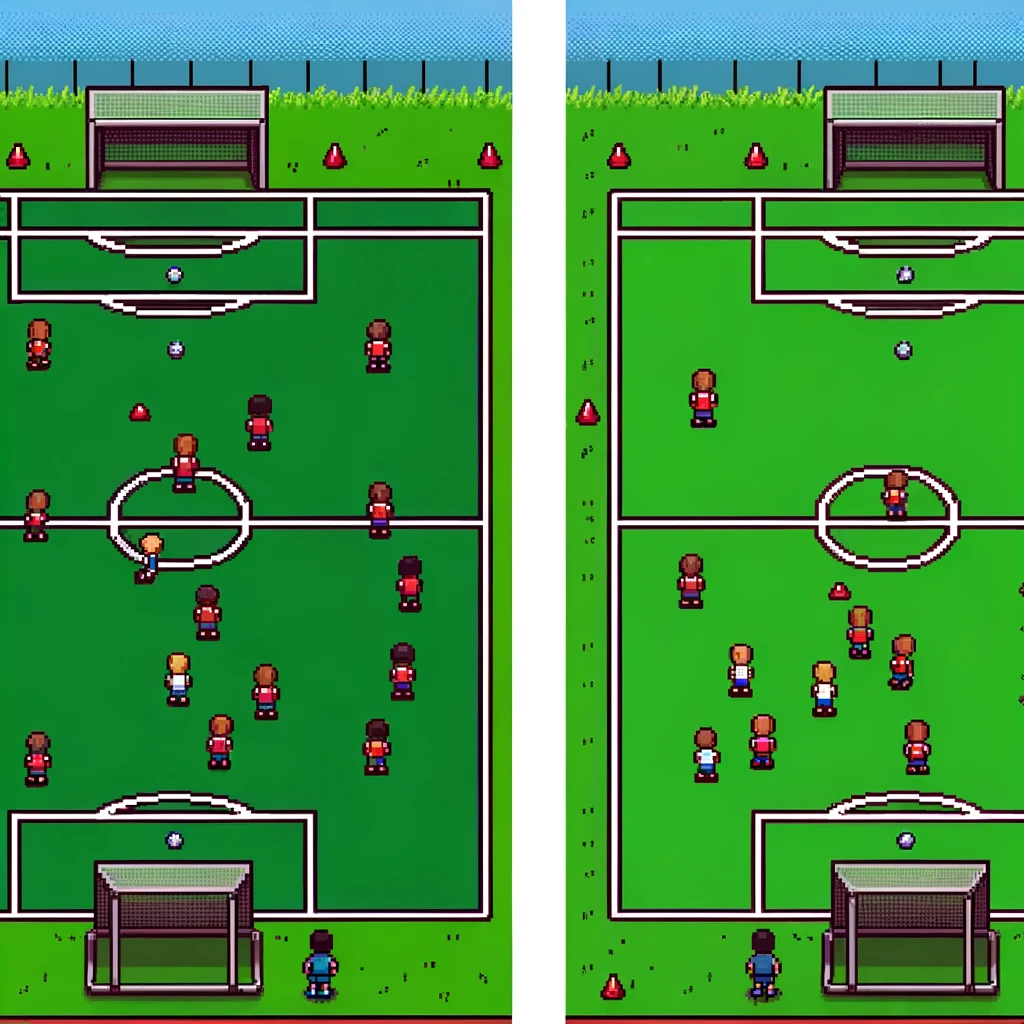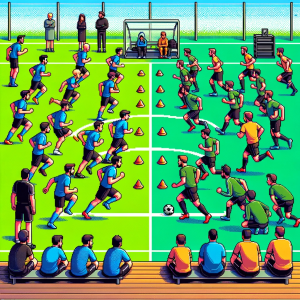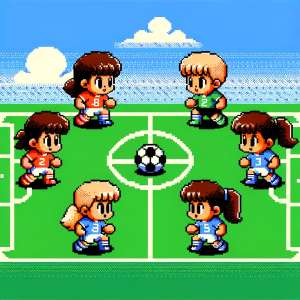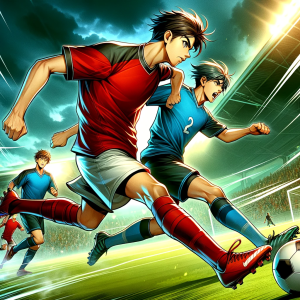
The Impact of Field Orientation on Soccer Small-Sided Games
There’s a continuous quest to optimize training methods to closely mirror the real-game scenarios. A pivotal study in this field, titled The influence of the field orientation on the representativeness of the positional dynamics in soccer small-sided games published in the Journal of Sports Sciences, sheds light on an often-overlooked aspect of soccer training: the orientation of the field in small-sided games (SSGs).
Small-Sided Games: A Crucial Training Tool
SSGs are miniature versions of a full soccer game, often employed in training to develop players’ physical, technical, and tactical skills in a game-like environment. However, the question of how representative these SSGs are of an actual 11-a-side match has been a topic of debate. This study critically examines this by comparing the positional dynamics in SSGs with varying orientations – greater length (SSGlength) or width (SSGwidth) – to those in official games.
Key Findings: Implications for Soccer Coaching and Player Development
The research, involving 24 Brazilian U-20 national-level players, revealed that the tactical behaviors in 4v4 SSGs differed significantly from those in official games. Notably, SSGs with a field orientation emphasizing length elicited higher values of relative team width and spatial exploration index compared to those emphasizing width.
These findings carry profound implications for soccer coaching:
- Tactical Awareness: Coaches should be cognizant that the field orientation in SSGs influences players’ tactical behavior. A length-oriented field might encourage wider play, while a width-oriented field might not necessarily increase positional dynamics similar to official matches.
- Training Specificity: The study highlights the importance of training specificity. Coaches might need to adjust the field dimensions in SSGs to ensure that they mirror the positional dynamics of official games more closely, thereby enhancing the transfer of skills from training to match situations.
- Player Development: For player development, particularly in tactical understanding and spatial awareness, varying the field orientation in training could be beneficial. It helps players adapt to different tactical situations, a skill crucial in high-level soccer.
- Customized Training Regimes: Understanding that different field orientations affect the game’s dynamics, coaches can tailor training sessions to target specific tactical objectives or address team weaknesses.
Moving Forward: A New Perspective in Soccer Training
This study invites coaches and trainers to rethink their approach to SSGs in training sessions. The traditional belief that changing field dimensions in SSGs automatically results in a training environment representative of official matches is challenged. Instead, a more nuanced understanding of how these dimensions influence player behavior is necessary.
Are you ready to delve deeper into the science and strategy of soccer?
This Week in Soccer offers you a unique blend of expert analysis, engaging infographics, and practical insights. Subscribe to our newsletter and stay ahead of the game with the latest in soccer analytics and coaching strategies. Make the move from spectator to strategist. Subscribe now!



